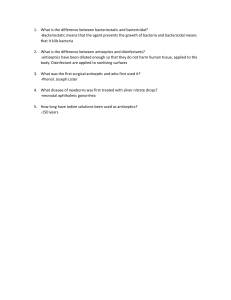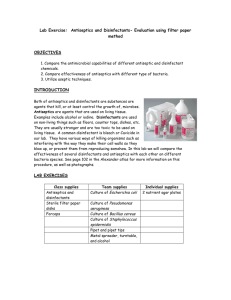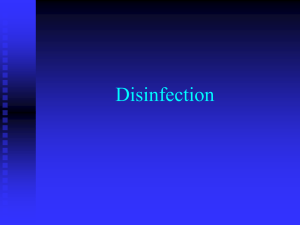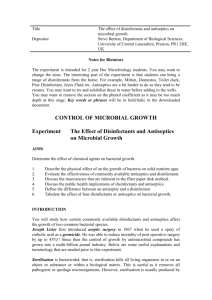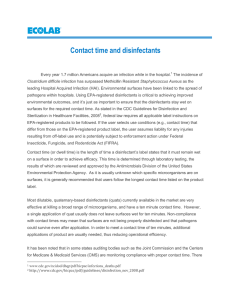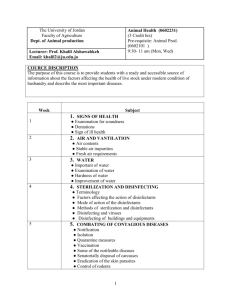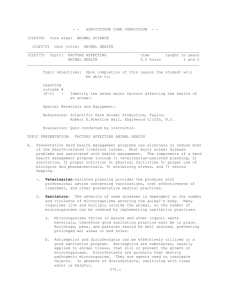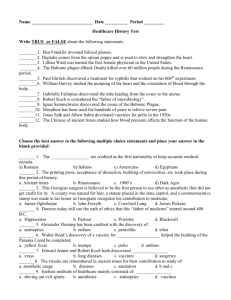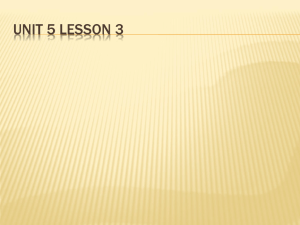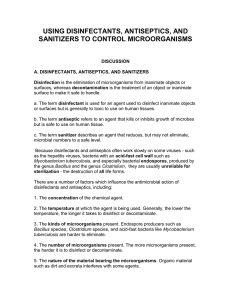Lab 9 Antiseptics and disinfectants
advertisement
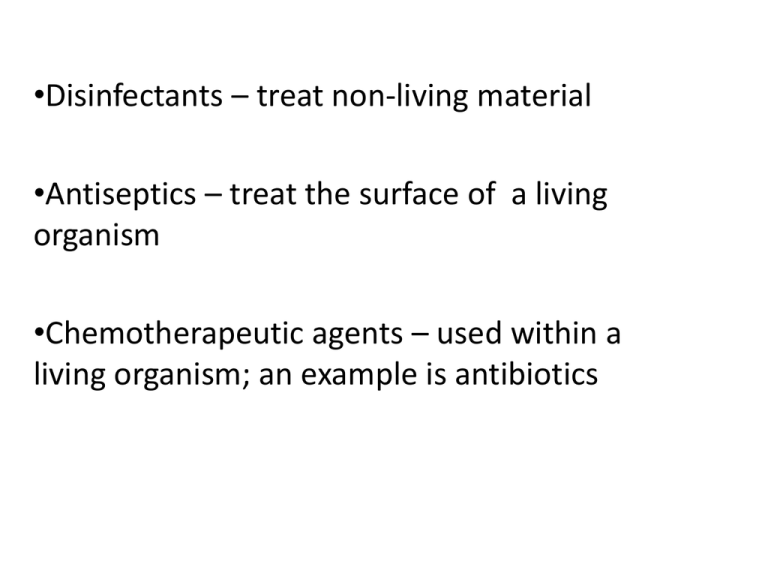
•Disinfectants – treat non-living material •Antiseptics – treat the surface of a living organism •Chemotherapeutic agents – used within a living organism; an example is antibiotics Classes of Antiseptics and Disinfectants 1 Alcohols • Straight chain – ethyl and isopropyl. Both are most effective at about 70% concentration • Phenols (carbon ring); Lysol, hexachlorophene Classes of Antiseptics and Disinfectants 2 Heavy Metals • Mercury compounds; mercurochrome • Silver compounds; silver nitrate used in newborn’s eyes to prevent possible gonorrhea infection Classes of Antiseptics and Disinfectants 3 Halogens • Chlorine compounds: bleach (Chlorox) used as disinfectant; also used to clean drinking water • Iodine compounds: – Tincture of iodine used as antiseptic – Betadine used as a disinfectant or as an antiseptic, kills spores, used to pretreat an area in which an incision will be made Classes of Antiseptics and Disinfectants 4 Soaps and Detergents • Relatively weak toxic effect, but effectively removes microbes from surfaces • May disrupt cell membranes Classes of Antiseptics and Disinfectants 5 Peroxides • Hydrogen peroxide is a toxic oxygen product. Has been used on the skin and as a mouthwash. Mode of action of Disinfectants • Most denature proteins • Some produce toxic oxygen products, in an oxidative burst: bleach and hydrogen peroxide. • Spores are most resistant to chemical agents • Mycobacteria are relatively resistant, due to waxy wall, which prevents penetration • The outer membrane of Gram - bacteria provides a barrier to penetration of some chemicals, so these are more resistant than Gram + • Pseudomonas (Gram -) is especially resistant because it can use many uncommon carbon sources for growth, including some antiseptics
